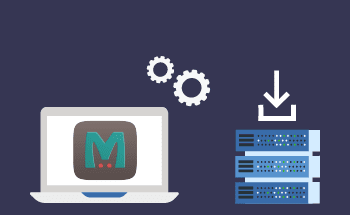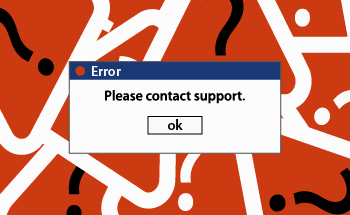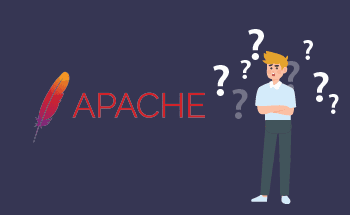What is an API and what is it for
19:30, 20.06.2022
During your probably many years of experience as a PC, laptop, or smartphone user, you have definitely come across this short abbreviation – API which stands for Application Programming Interface. Although most users are not aware of using APIs, APIs are involved in a huge part of applications nowadays, enabling various functions without the world of application wouldn’t look like it looks if you’ve ever wondered what API this, then the following reading will clarify all of its fundamental aspects for you.
Main features of APIs
Application Programming Interface is a set of tools and functions that ensure the interaction of various programs with each other. Besides that, API is often also responsible for communicating different parts of the system applications. APIs are vital for creating of complex and multi-level supports that support a wide range of features.
The Mechanics Behind APIs
Different APIs are generally presented in the form of libraries that contain different sets of functions, that can be further used by developers to perform different sets of tasks. API as such works as a kind of communication bridge between the client application interface and the API server that is responsible for the back-end logic and accessing databases.
One of the primary goals of APIs is to facilitate communication between a client making requests and a server processing those requests. Here is how the process of interacting with API generally looks like:
- The client sends a request with appropriate HTTP methods. This request includes API building blocks, like headers, parameters, and optionally a request body.
- The server processes the request, checking the endpoint and the method, then reads or writing to a database, performing computations, or calling other services and verifying authentication and authorization.
- The server sends a response that includes a status code, headers, and a response body.
- The client receives and processes the response. Afterward, the applications will use the data as needed to display the acquired information to the user or store it locally.
Building Blocks of APIs
Typically, an API includes the following components:
- Endpoint: Endpoint is the specific URL, where API can be accessed by a client application.
- Request: The request is made by the client and sent to the server. In comprises:
- HTTP method: Here the type of operation is set. It can be GET, POST, PUT, DELETE, etc.
- Headers: The headers provide additional information, such as authentication tokens.
- Parameters: Parameters include query parameters (appended to the URL) and body parameters (included in the request body).
- Response: Response refers to the data that is sent back from the server to the client, usually presented in the formats JSON or XML format.
- Status codes: These codes are responsible for indicating the result of the requests (e.g., 200 for success, 404 for not found, 500 for server error).
Different Types of APIs
There are various types of APIs as well as multiple ways to categorize them based on different aspects.
Web APIs are the most common type of APIs. These APIs use HTTP/HTTPS to enable communication between a client and a server over the web.
Library APIs are APIs that enable communication with various programming language libraries. These are commonly used by developers to perform tasks by including function calls within their code.
Operating system APIs are used to interact with underlying operation systems, in particular providing functions to manage different hardware and system resources.
Database APIs are APIs that are broadly used in database management systems (DBMS), providing various methods to perform CRUD – Create, Read, Updated, and Delete operations on databases.
Remote APIs are APIs used to manage remote resources over a network. These are particularly important for distributed systems and cloud services.
Hardware APIs are APIS that are used to enable interaction between software and hardware, providing instructions, on how particular hardware resources are to be accessed. Common examples of them are device drivers and Internet of Things APIs.
Service APIs are APIs that provide functionalities of various web services and cloud services. The range of capabilities they provide is extremely diverse, including such things as data storage, machine learning, payment processing, and many others.
Embedded APIs are APIs used in embedded systems to provide functionalities for specific hardware and software environments.
Release Policies: API Availability
APIs can be categorized according to their availability in terms of release policy. Here, we have three main types: private (internal), partner, and public.
Private (internal) APIs are the APIS that are used within a particular organization. Their purpose is to connect systems, services, and applications within this organization’s digital ecosystem, while external users are usually not supposed to access them, with access to certain APIs often even limited to particular teams and departments.
APIs of this type play an important role for organizations enhancing modularity within an organization's software architecture, enabling different internal systems to communicate, and improving efficiency and productivity. For example, such APIs can be used to connect internal HR systems with payroll systems, and APIs for internal data processing and analytics.
Partner APIs are APIs that are used across several business partners. They are mostly not accessible to the public but are rather used to integrate the services of two or more businesses. To access them, partners often have to sign agreements and get approval.
APIs of this type are often used to provide communication between payment processors and e-commerce platforms or for supply chain integrations between manufacturers and retailers.
Open (Public) APIs are APIs that are publically available to any developer being designed to be accessible to anyone, often accompanied by comprehensive documentation.
To be accessed, these APIs often need registration, necessary to get an API access key, while some open APIs are completely open and need no authentication.
Public APIs may have the most diverse use cases, often allowing to integration of different services and solutions to the applications by any developer. OpenAI API, Google Maps API, and OpenWeather API are a common example of those.
API Standards and Protocols
Various APIs exist due to a wide range of API standards and protocols. Here are some of the most common ones.
RPC, SOAP, REST, gRPC, and GraphQL
RPC: RPC (Remote Procedure Call) is a type of remote API that allows a program to execute procedures on remote devices.
gRPC: gRPC is a high-performance RPC framework developed by Google, featuring HTTP/2 for transport, Protocol Buffers for serialization, authentication, load balancing, and many more.
REST is a type of WepAPI. It uses standard HTTP methods (GET, POST, PUT, DELETE). REST APIs are also stateless, meaning that each request from a client to a server must contain all the information the server needs to fulfill that request. For data exchange, REST APIs mostly use JSON or XML.
SOAP: SOAP is a type of Web API that uses XML for messages and relies on application layer protocols like HTTP and SMTP. It’s primarily used to exchange structured information in a decentralized, distributed environment.
GraphQL: GraphQL is a query language for APIs and a runtime for executing those queries. The main and only purpose of this API is to allow clients to request exactly the data they need.
Navigating API Documentation
API documentation is critical for the implementation of different APIs since it contains the information necessary to use this or that API. A usable API needs in the first place usable documentation, containing the entire information on how and for what this or that API can be used for.
A good and well-structured piece of API documentation typically contains:
- Overview section: Here you can find the introduction – a brief description of what the API can do, the base URL, that is, the root URL for all API endpoints, and the API versioning.
- Authentication: Here you can find the information on authentication mechanisms used. These typically include API keys, OAuth token authentication steps, and other possible methods.
- Endpoints: Here you can find details about all the endpoints, this section usually contains the bulk of the documentation. The section usually covers the endpoint URL, HTTP methods, and parameters – path parameters, query parameters, body parameters, and headers.
- Request examples: Contains the guidelines and examples on how to make requests.
- Respond format: In this section, the structure of API responses is elaborated.
- Rate limits: Policies on rate, including the number of allowed requests per time period, checking the current usage and remaining quotes, and recommendations for handling rate limiting.
- SDKs and libraries: Within some APIs, client libraries or SDKs are provided by the API provider. This section may contain links to official SDKs by the provider.
- FAQ and troubleshooting: Common questions and solving common issues.
- Support and community: Here you can find the information on the largest support channels, links to support forums, email support, or ticketing systems, as well as online communities and discussion boards.
Real-world API Implementations
There is an infinite number of APIs used in today’s digital world. Let’s have a look at some common examples that you have definitely come across at some point.
Google Maps API: Whenever you go to a website and see that there is an interactive map integrated into its interfaces, chances are you’re dealing with Google Maps API. Google Maps API features embedding maps in web pages and applications, geocoding (converting addresses to coordinates), directions and route planning, and others.
Twitter API allows interaction with the Twitter social media platform, so users may post tweets, retrieve timelines, access user profiles and follower lists, search for tweets, stream tweets in real life, and many others. This API is particularly useful for social media management tools.
Stripe API is an API by a widely used payment processor stripe, which allows for secure payment processing, subscription management, handling refunds and disputes, and managing customer information.
Spotify API is used to access Spotify streaming service without being on the Spotify official web player website. This can be particularly helpful for creating recommendation apps, DJ software to integrate Spotify tracks, and sharing music features on social media platforms.
Skyscanner Flight Search is a platform that allows users to search for flights to a given location provided by different companies, thus simplifying the process of finding an optimal flight.
The Advantages of Utilizing APIs
APIs play a crucial role in modern-day software and particularly application development. They allow software developers to integrate ready-made third-party solutions for their services without developing new tools from scratch and without diving deep into the source code. API is a kind of abstraction layer that allows communication between different applications and pieces of hardware. Therefore, for many companies that want to develop applications of various kinds, the main question is not about whether to use APIs or not, but what APIs to use and how to integrate them into their software and hardware ecosystems.


